Corn vegetation (Dracaena fragrans) are well-liked low-maintenance houseplants you’ve in all probability seen on the nursery, house enchancment retailer, or physician’s workplace. I even had one in my school dorm room! You’ll be able to acknowledge them by their spear-shaped leaves and woody, cane-line trunks that may develop as much as 6 toes tall indoors. However do you know there are a number of types of corn vegetation? We didn’t! Heck, we didn’t even understand a few of our smaller houseplants had been in the identical corn plant household!
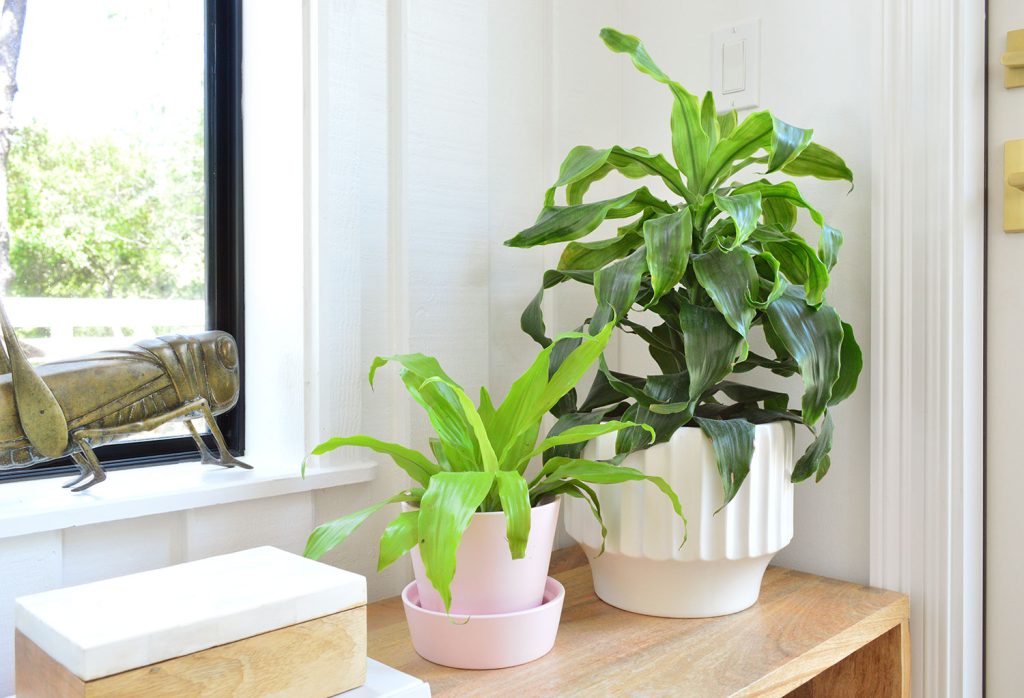

Presently, we personal two smaller types of corn vegetation, pictured above. The one on the left is a Dracaena Limelight (Dracaena fragrans ‘Limelight’) and the taller plant is a Draecanea Dorado (Dracaena fragrans ‘Dorado’). We even have a number of limelights round as a result of we love their vibrant coloration on cabinets, tabletops, and windowsills.
Corn Plant Fast Details
- Latin title: Dracaena fragrans
- Frequent names: Corn plant, cornstalk plant, false palms
- Mild: Vibrant, oblique gentle however can tolerate lower-light circumstances
- Watering: Maintain soil moist, however not soggy. Water if the highest 2″ of soil is dry.
- Soil: Unfastened, loamy soil with good drainage
- Mature measurement: As much as 6ft tall indoors
- Very best Humidity: Common family humidity, ideally 40-50%
- Very best Temperature: 65-75º
- Chilly Hardiness: USDA Zones 11-12
- Native to: Tropical Africa
What Is A Corn Plant?
Family corn vegetation aren’t the identical because the candy corn crop you discover on farms, however they had been named for his or her similar-looking leaves. As an alternative, corn vegetation are associated to asparagus and are members of the Dracaena genus (pronounced dra-SEE-nuh). This broad class of houseplants additionally consists of snake vegetation, dragon timber, and fortunate bamboo. Dracaena sometimes have grassy or spear-shaped leaves that develop from a sturdy heart stalk. They’re slow-growers, however can attain over 6ft in peak in the appropriate circumstances. Due to this, plus their thick trunks and tropical leaves, they’re generally referred to as “false palms.”
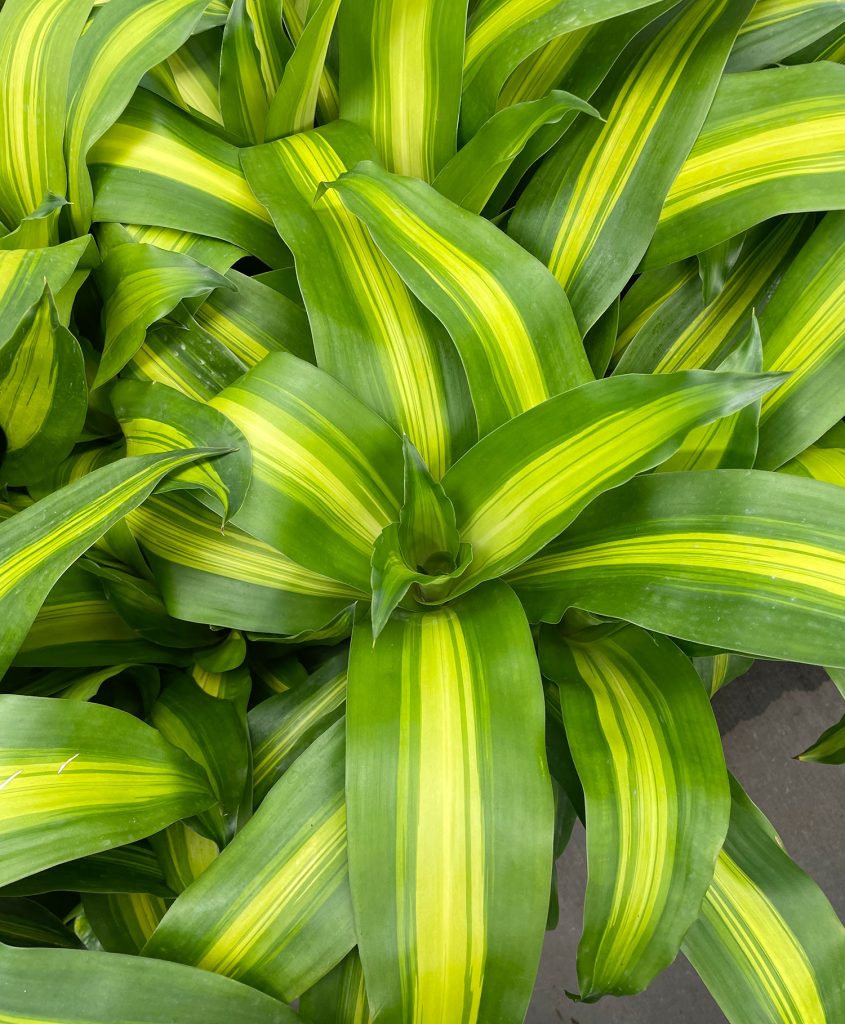

I’ll admit that we’re not enormous followers of the standard corn plant, as a result of we choose fuller and extra bushy houseplants. However they’re positively nice choices in order for you a hardy, tall plant that appears extra tree-like. That’s why in our house we are inclined to maintain the smaller variations round.
Forms of Corn Vegetation
Like most houseplants, a number of varieties or “cultivars” of corn vegetation have been bred over time. The unique species (Dracaena fragrans) isn’t even that widespread anymore! Here’s a listing of some others that you could be discover.
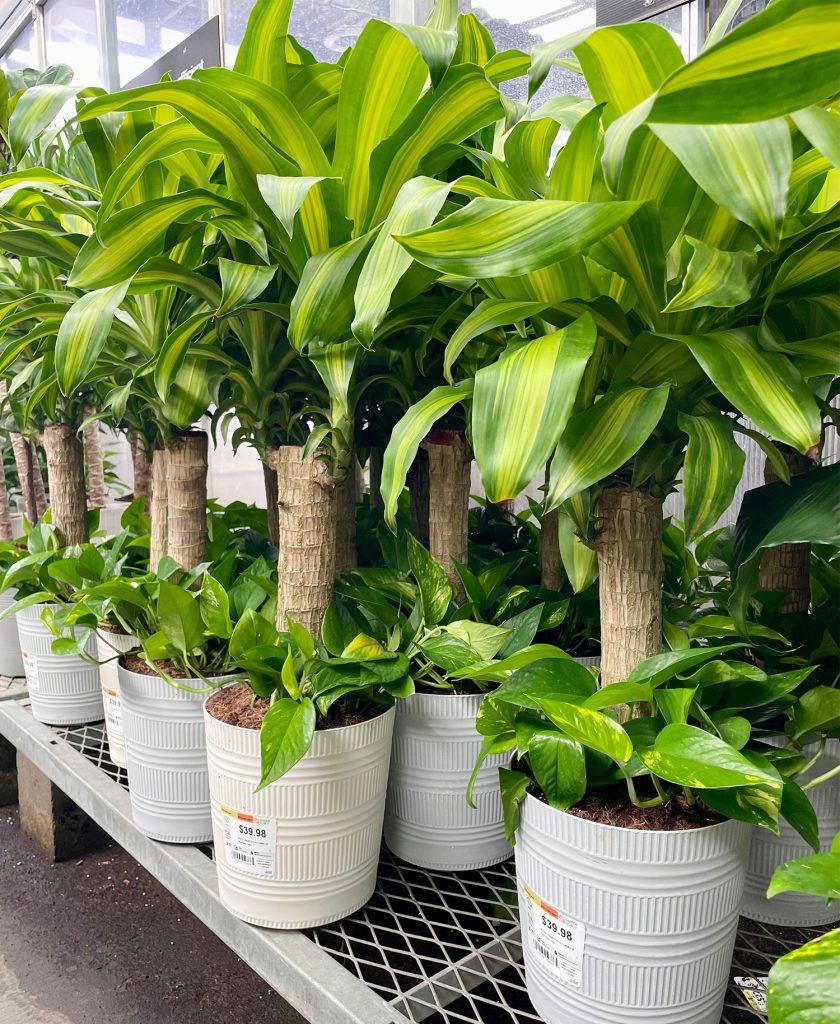

- Dracaena fragrans ‘Massangeana’ (pictured above, with golden pothos at base): That is the most typical selection, generally referred to as the Mass Cane. Just like the OG corn plant, it has a thick, woody trunk with lush foliage. The important thing distinction is that the Massangeana leaves have yellow stripes down their heart as an alternative of being strong inexperienced. You’ll be able to sometimes discover them bought in pots with 2 or 3 trunks, already 1-2 toes in peak.
- D. fragrans ‘Lindenii’: Additionally much like the Massangeana selection, however the yellow striping is discovered towards the sides of the leaves.
- D. fragrans ‘Victoria’: Once more, much like the Massangeana, however with smaller, wider, and extra triangular leaves. It additionally tends to be extra compact. This selection is difficult to seek out.
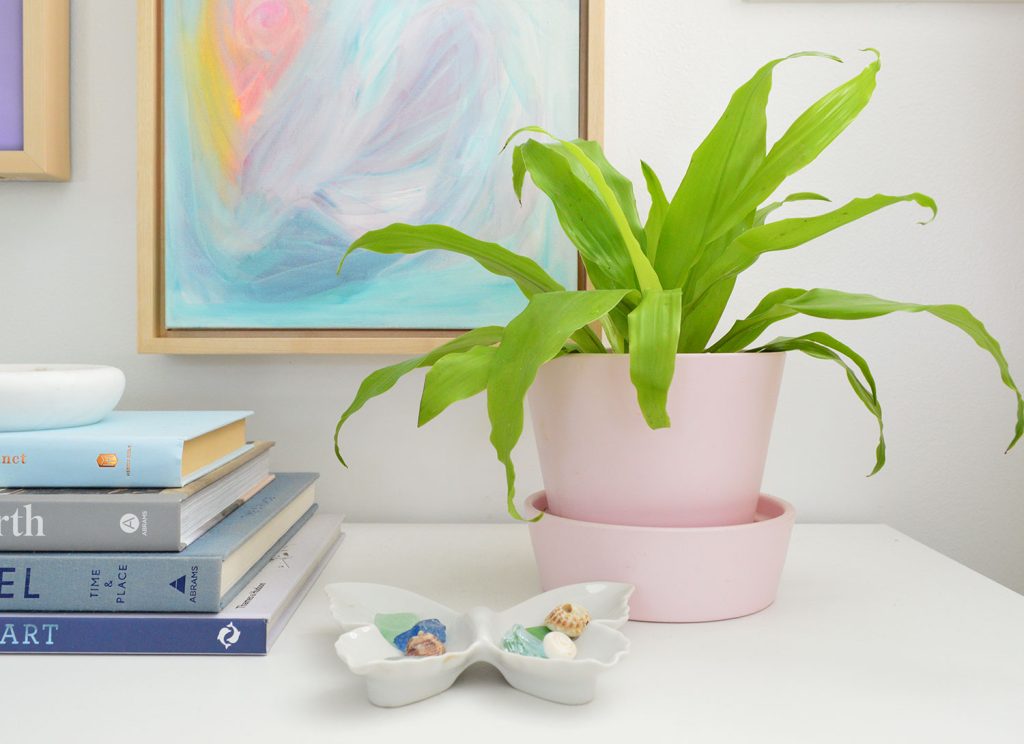

- D. fragrans ‘Limelight’: (Pictured above) Identified for its vibrant, yellow-green leaves that are typically a bit narrower. The leaves brighten as they mature
- D. fragrans ‘Lemon Lime’: Just like the Limelight proven above, nevertheless the yellow-green leaves function a darker inexperienced stripe down the center.
- D. fragrans ‘Dorado’ (Pictured beneath): The deep inexperienced leaves on this selection are identified to curve again in the direction of the middle, for a denser look. They might have lighter inexperienced striping on the skin of the leaves.
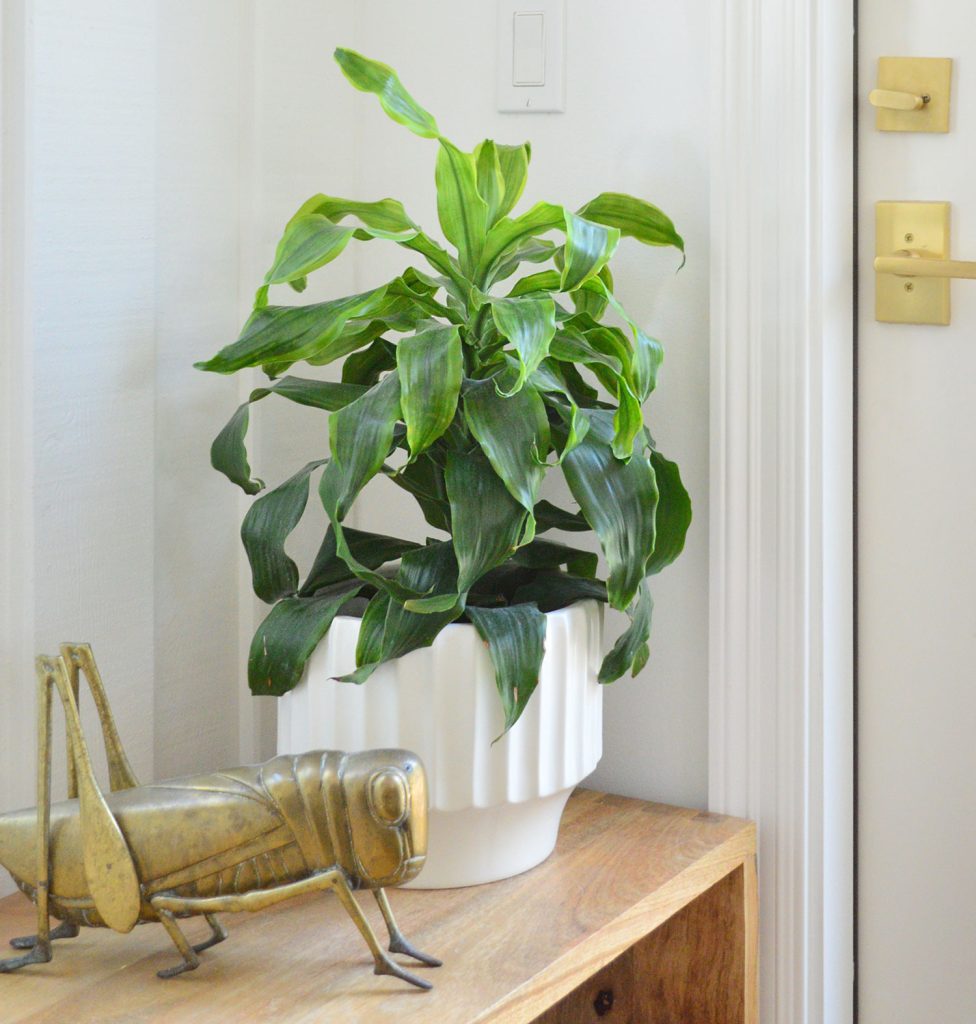

How To Care For A Corn Plant
Mild
Corn vegetation do greatest in vibrant, oblique gentle. They’ll survive in decrease gentle circumstances however might lose a few of their vibrant coloration or variegations. We’ve discovered that ours do greatest close to home windows, however not the place they may get an excessive amount of direct daylight. This will trigger their leaves to burn.
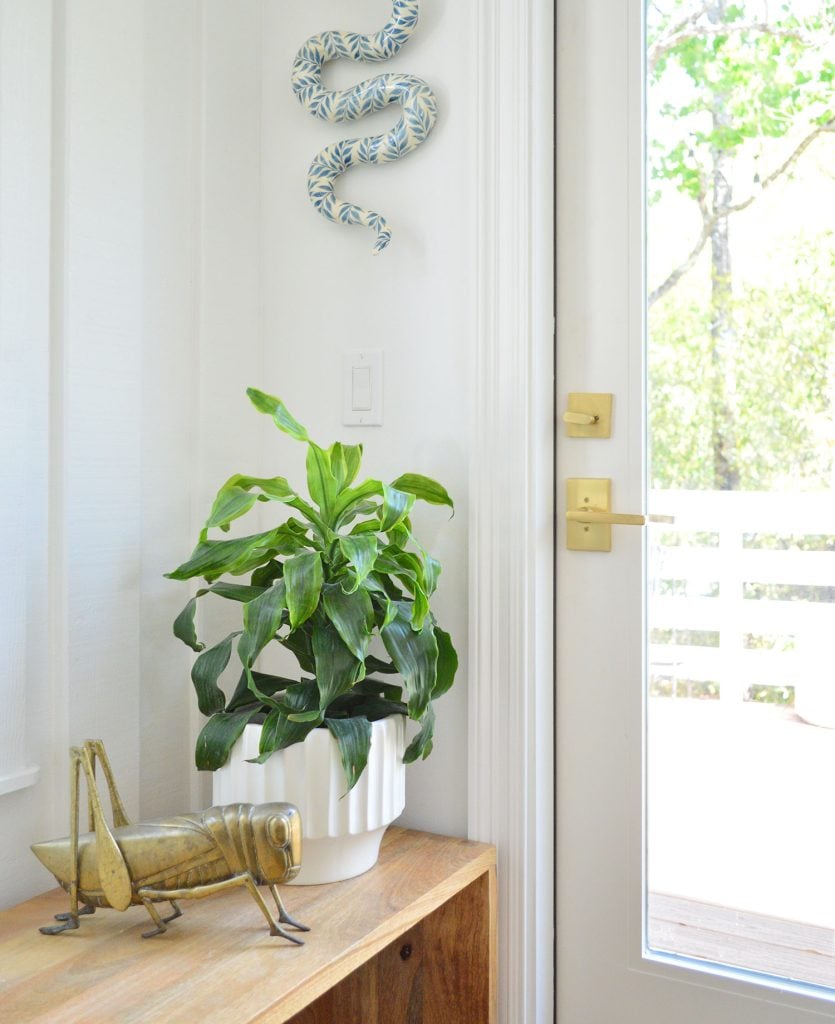

Water
Corn vegetation require barely extra energetic watering than a few of our different simple houseplants. They like soil that’s moist, however not too soggy. This implies you need to attempt to maintain the highest 1″ of soil damp, and add water if it has dried out. Simply watch out to not overwater and make certain your pot has drainage holes. You can even reduce on water within the fall and winter, when the plant will not be actively rising. Some corn vegetation will be delicate to chemical substances in faucet water, so think about filtered water as an alternative.
Soil
Select soil that drains effectively (most traditional potting soil will do) and think about mixing in some perlite or vermiculite. These assist retain soil moisture and guarantee a unfastened, well-draining combine. Additionally, be certain that your pot has a gap to much less extra water escape in order that your corn plant’s roots don’t sit in water.
Temperature & Humidity
Since corn vegetation choose temperatures between 65-75º and humidity round 40-50%, they need to do effectively in most house environments. They can be saved outdoor in containers, simply convey them in when temperatures drop beneath 50º. You can even improve the humidity by including a humidifier or sitting the pot on a pebble tray with water.
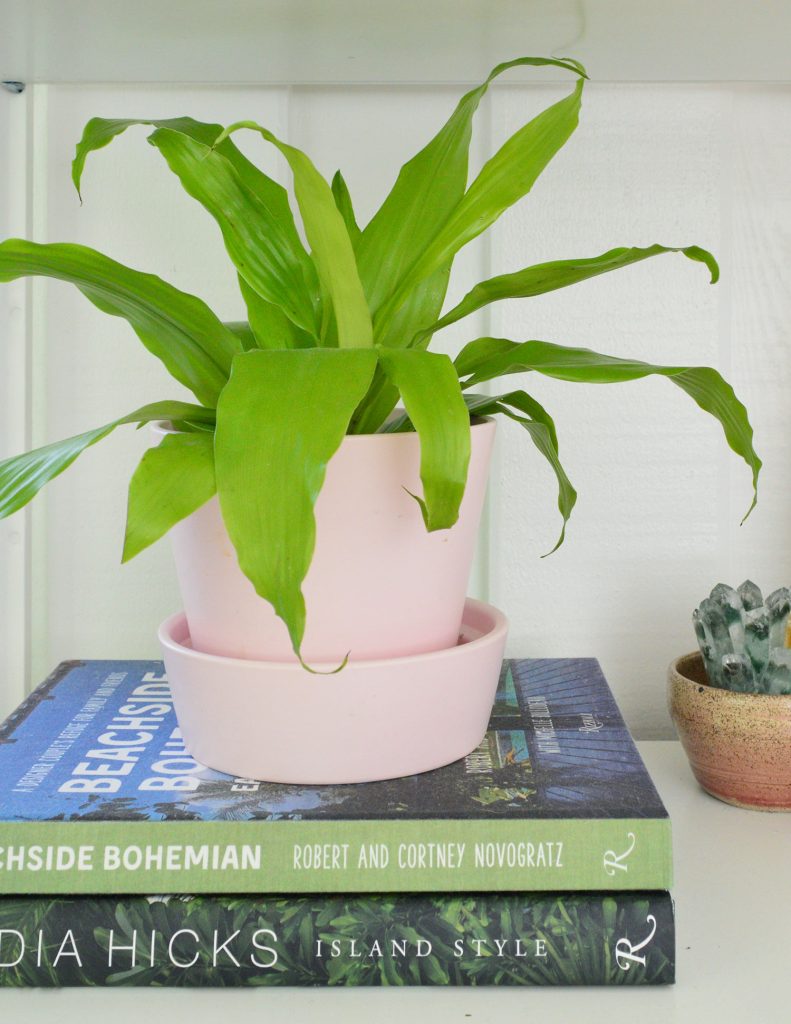

Pruning
Decrease leaves in your corn plant will naturally yellow and die over time. You’ll be able to take away these by hand, or with clear, sharp shears. You can even take away the highest portion of the plant to regulate its peak. Use these shears to chop its stem or “cane,” and new progress ought to proceed from that time.
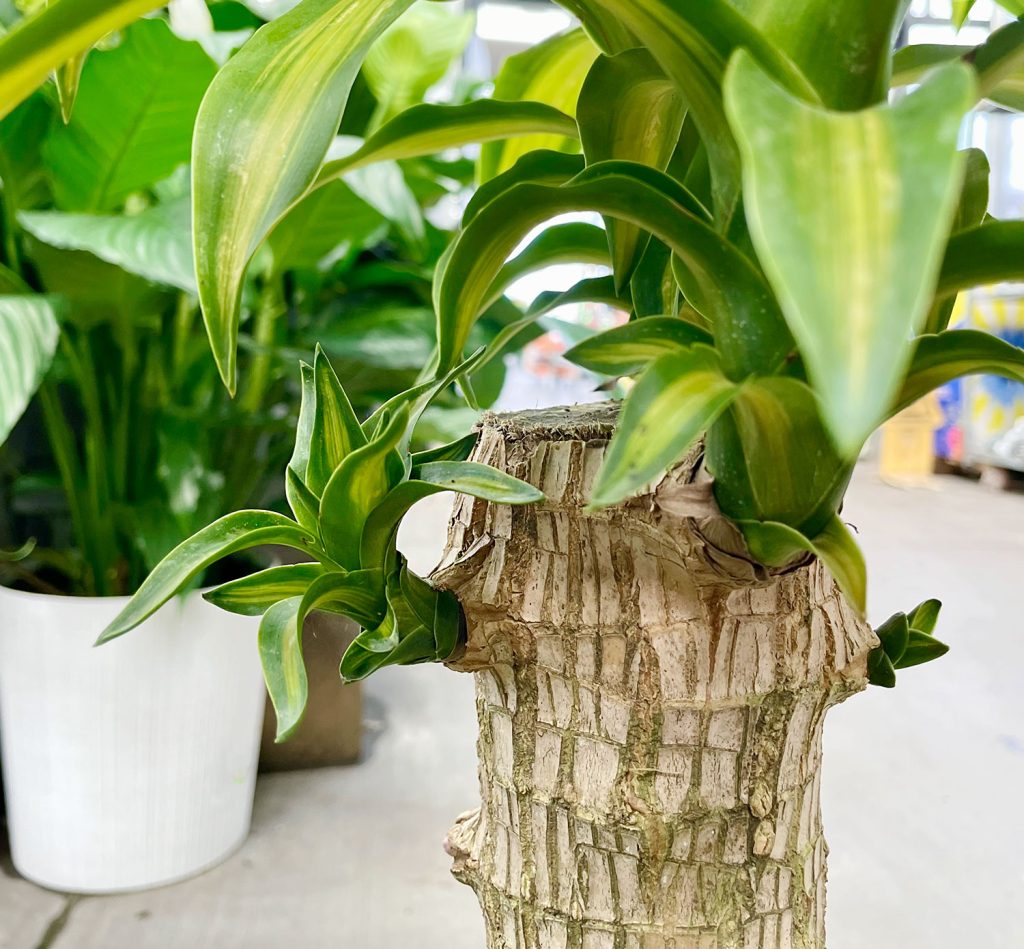

Fertilizer
Throughout its spring & summer season rising season, think about including a balanced fertilizer as soon as a month. These houseplant tablets are simple to drop into your watering can.
Propagating A Corn Plant
Anytime you prune a corn plant, your stem chopping turns into a terrific alternative to develop a brand new plant. Right here’s easy methods to propagate your dracaena:
- Step 1: Use clear, sharp shears or pruners to chop a 8″ part or extra from the highest of the stem. Take away decrease leaves to show the stem and think about chopping it at an angle to show extra floor space.
- Step 2: Submerge the lower finish in clear water, ideally in a transparent glass. Make certain no leaves are submerged. Place the glass in a vibrant spot.
- Step 3: Change water each week or two to discourage algae or micro organism progress, and prime off any loss as a result of evaporation. It’s best to see roots start to kind inside a couple of weeks.
- Step 4: As soon as at the least 1″ of roots have grown, switch your lower stem to a small pot with well-draining soil. Proceed to care to your new plant as normal!
Frequent Points
A few of our corn vegetation have been completely behaved and virtually thrive on neglect, however others have been drawback kids. So whereas they’re typically low-maintenance, listed below are some widespread issues to look out for:
- Pests: Corn vegetation are vulnerable to widespread houseplant pests like spider mites, mealy bugs, or fungus gnats. Most of those pests will be eliminated with a humid fabric or a neem oil software, which can assist forestall future infestations.
- Yellow leaves: Yellow leaves are sometimes an indication of overwatering, however may simply be a part of the pure life cycle of the leaf. Examine the drainage of your pot and think about decreasing your watering.
- Brown leaves or suggestions: This might point out underwatering or low humidity. Make certain to maintain the highest 1″ or 2″ of soil moist. In case your soil now not holds moisture effectively, think about repotting with recent, unfastened soil.
- Dry spots or patches: Your corn plant could also be getting an excessive amount of direct daylight, which is burning the leaves.
- Foul odor or sudden leaf dropping: Overwatering might have induced root rot. Take away the plant from the pot and examine the roots. Take away lifeless or rotted roots, and repot in recent soil. Some vegetation develop into unsalvagable at this level.
- Curling or noticed leaves: Corn vegetation will be delicate to chemical substances in faucet water comparable to chlorine or fluoride. Attempt utilizing distilled water or let your faucet water sit out for an hour earlier than watering to permit these chemical substances to dissipate.
Different Corn Plant FAQs
Are corn vegetation poisonous to cats and canines?
Corn vegetation are poisonous to pets as a result of they comprise saponins, which may trigger vomiting, lack of urge for food, and shortness of breath. Seek the advice of with a veterinarian in case you consider your cat or canine has ingested any a part of your plant. It’s greatest to put these out of attain of any animal or curious little one who might nibble in your corn plant.
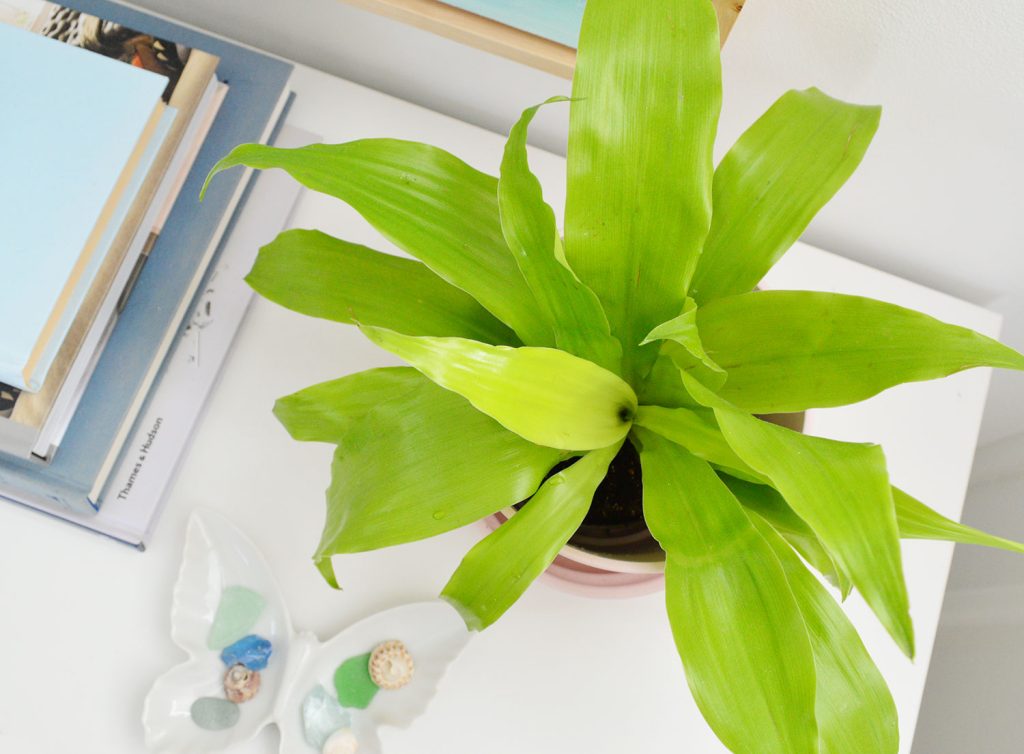

How tall does a corn plant get?
In nature, corn vegetation can develop as tall as 50 toes! Nonetheless, they’re unlikely to develop a lot taller than 6 toes tall in an indoor container. Most corn vegetation develop nearer to 3-4 toes. They’re sluggish growers although, so be affected person!
Can corn vegetation survive exterior?
Corn vegetation are rated for USDA Hardiness Zones 11 and 12 which excludes all the continental United States. In case you’d wish to maintain a corn plant outdoor, put it in a container that may be introduced inside when temperatures drop beneath 50º. Maintain it in partial shade to stop burned leaves.
Do corn vegetation flower?
Technically, sure, however hardly ever in indoor circumstances. Some very blissful, mature home vegetation might produce aromatic white flowers periodically – even a number of years aside.
Extra Vegetation We Love
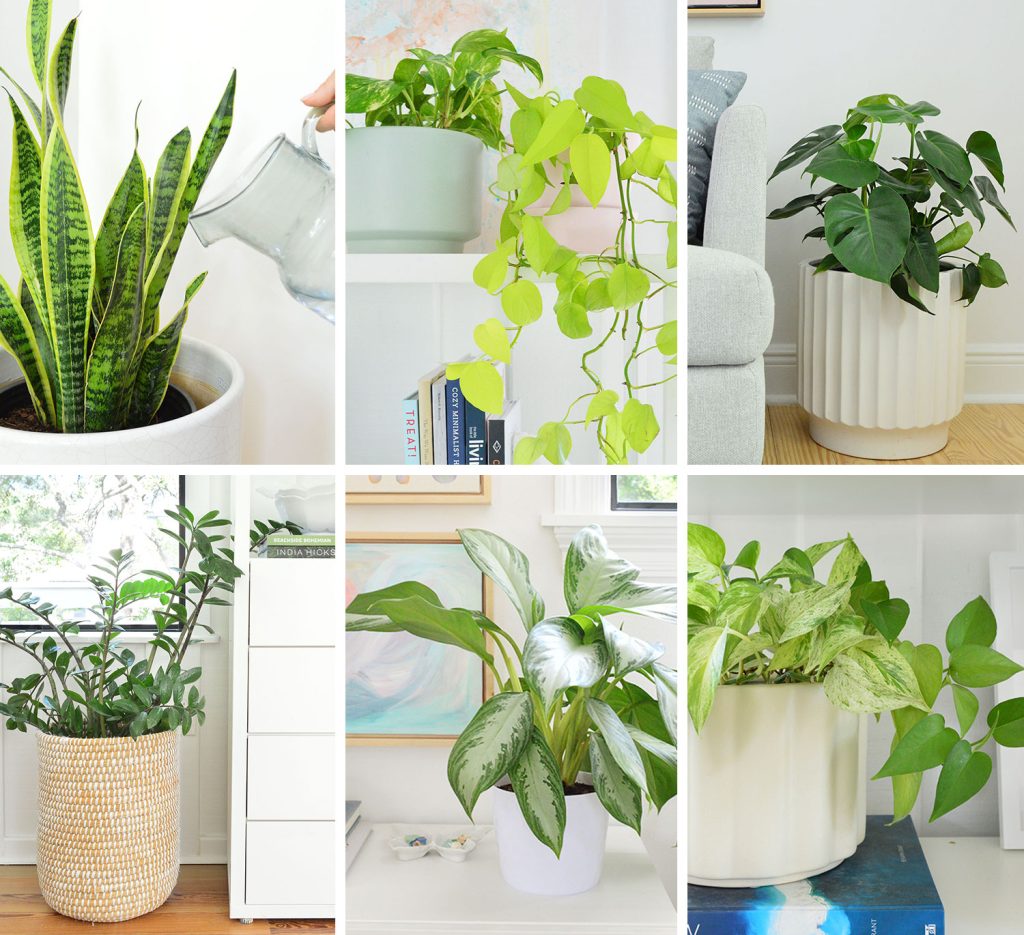

In case you’re searching for extra data on a few of our favourite vegetation, try a few of these posts beneath:
*This put up accommodates affiliate hyperlinks, so we might earn a small fee whenever you make a purchase order by hyperlinks on our website at no extra price to you.